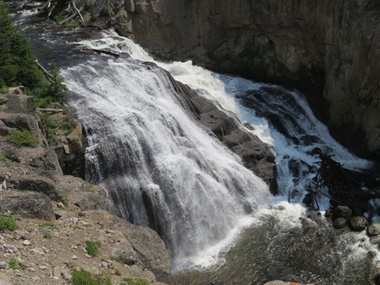
2014-07-15: Gibbon Falls
Today found us touring in Yellowstone. This is our 4th trip to the park so we decided we would visit some of the less popular places. Gibbon Falls has a drop of approximately 84-feet. The falls were first described by William Henry Jackson in 1872 but it's unclear how it actually got it's name.
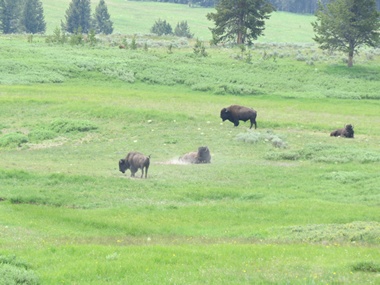
2014-07-15: Bison
Although we were lucky not to get in a buffalo jam we did get to see plenty of the beasts. It's always fun to see them wallowing in the sand which is evidently part of their daily routine.
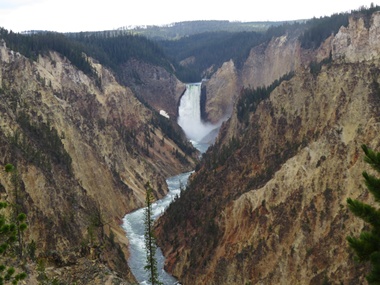
2014-07-15: Lower Falls
The lower falls, a part of the Grand Canyon of Yellowstone, are 308 feet high, or almost twice as high as Niagara. The volume of water is in no way comparable to Niagara as the width of the Yellowstone River before it goes over the lower falls is 70 feet, whereas Niagara is a half mile. They descend from the 590,000 year old Canyon Rhyolite lava flow. The lower falls of the Yellowstone is the largest volume major waterfall in the Rocky Mountains of the United States. The volume of water flowing over the falls can vary from 63,500 gallons at peak runoff to 5,000 gallons in the fall.
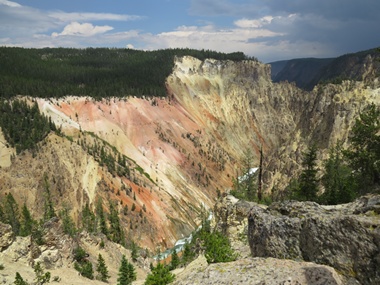
2014-07-15: Grand Canyon of Yellowstone
As the Yellowstone river flows north from Yellowstone Lake, it leaves the Hayden Valley and plunges first over upper and lower falls and then enters the Grand Canyon of the Yellowstone, which is up to 1,000 feet deep. The canyon is approximately 24 miles long and about a mile wide. The colors in the canyon are spectacular.
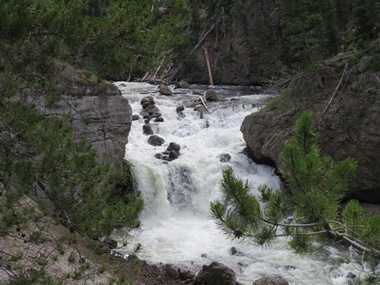
2014-07-15: Firehole Falls
Firehole Falls is a waterfall on the Firehole River. The Falls have a drop of approximately 40 feet and are located in Firehole Canyon. I guess we are going to see all the waterfalls of Yellowstone on this trip!
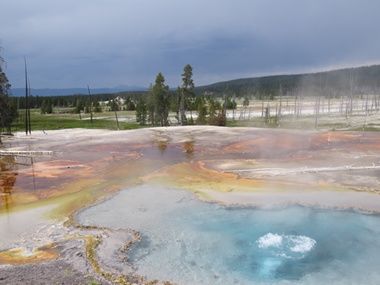
2014-07-15: Firehole Springs
Firehole Spring is constantly bubbling. Early explorers thought the large bubbles looked like flashes of light or a flickering flame - hence the origin of the spring's name. It's incredible to see the various colors rising in the bubbling gases.
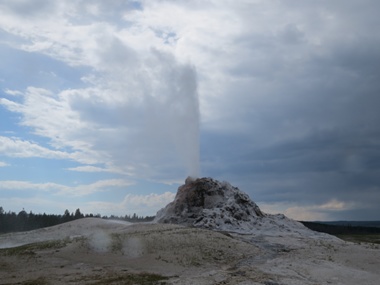
2014-07-15: White Dome
White Dome is a conspicuous cone-type geyser. Its 12-foot-high geyserite cone is one of the largest in the park. Its eruptions are unpredictable, but generally occur with intervals ranging from 15 minutes to 3 hours. Eruptions typically last 2 to 3 minutes and reach heights of about 30 feet. As usual for cone-type geysers, the play is continuous for most of the eruption's duration, and begins and concludes with a brief steam phase intermixed with liquid spray. As we were looking at the cone I remarked that steam had begun to spew out the top. All of a sudden White Dome really showed us what she could do as a real eruption began even getting us wet we were so close (not to worry, the water had cooled by the time they got to us). I thought for sure I was going to smell like rotten eggs! What an experience!
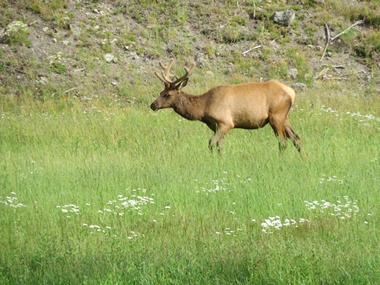
2014-07-15: Elk
On the way out of the park (we are actually staying in Island Park, Idaho which is about 20-miles from the west gate) we spotted some elk grazing beside the Madison River.

2014-07-16: Johnny Sack Cabin
Today we decided to do some exploring in the Island Park area. Our first stop was the Johnny Sack Cabin. Mr. Sack, who was from Germany, leased as small tract of land from the US Forest Service and began building a log cabin and a waterwheel to harness the power of the springs and create electricity in the Big Springs area. He furnished the cabin with beautifully crafted furniture he made himself.
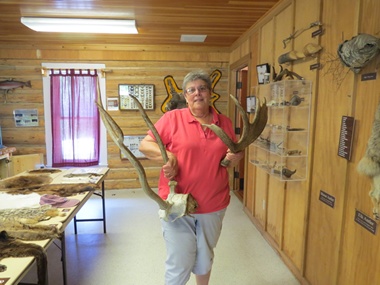
2014-07-16: Mesa Falls Recreation Area
Continuing our tour of the area, we visited the Visitor's Center at Mesa Upper Falls which is located in an old historical lodge. They had a great hands-on room where we were able to touch the pelts of many of the local wildlife as well as pick up antlers to test how heavy they were. With one moose antler and one elk antler I just wasn't strong enough to get them on my head! How do those creatures haul those things around day and night?
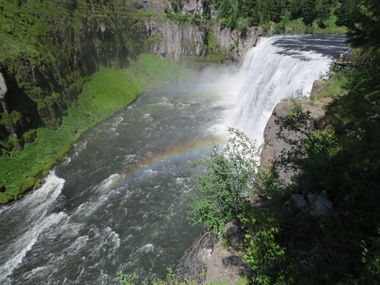
2014-07-16: Upper Mesa Falls
Upper Mesa Falls drops 114 feet and was created by volcanic eruptions filling the area with basalt lava flows 1.3 million years ago. Today, at it's peak, over 2.5 billion gallons of water pour over the falls daily! We could sure use some of that in Southern California!

2014-07-16: Osprey Nest
Across the river we spotted an osprey nest. Looking through binoculars we could see the mama with her wings spread trying to keep her chicks warm. The ranger said that they had not seen the chicks until about a week ago so they were still pretty small.

2014-07-16: Potato Barn
Continuing on to Ashton, we came out of the forest and into some beautiful farmland where they were growing not only feed, but also canola seed and of course potatoes - we are after all in Idaho!
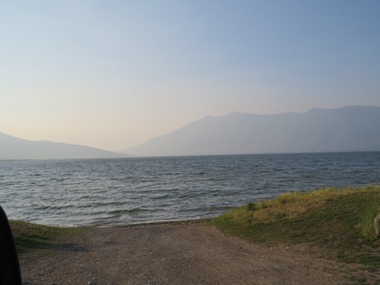
2014-07-16: Henry's Lake
Our campground is quite close to the Henry's Lake so tonight we drove down to see it. It seemed rather hazy to us but we think that may be caused by some of the fires they're having in Idaho.
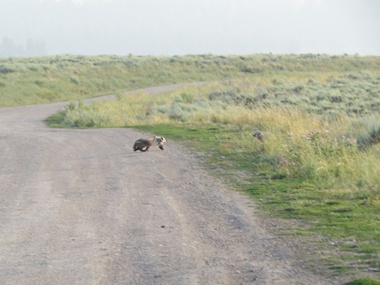
2014-07-16: Badgers
Heading back to camp along the dirt road, we found these two badgers playing in the middle of the road. I think it's the first time I've ever seen a badger in the wild!